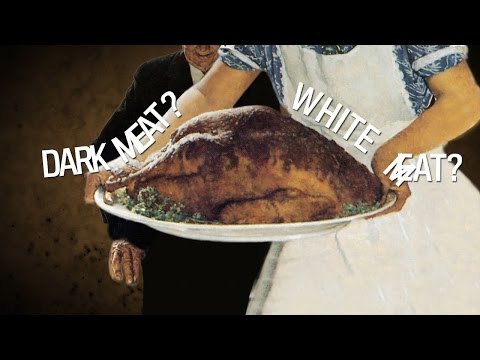There are key differences between white and dark meats, but nutritionally, they’re more similar than not. The video above details the biological mechanisms behind different cuts of turkey…
In a turkey the active muscles such as the legs store a lot of oxygen and become dark, while less active muscles like the breast remain white.
Turkeys can fly short distances — typically from ground to perch — but they are not known for their sustained flying abilities. They rely on their legs to get them around. The active muscles, such as the legs and thighs, are full of blood vessels. These blood vessels contain myoglobin (or muscle hemoglobin), which delivers oxygen to the muscles. The more myoglobin the muscles contain, the darker the muscle.
Scientists often refer to these active muscles as slow-twitch fibers. Slow-twitch fibers are built for endurance, which allows the muscles to work for long periods of time. Thus the turkey can run around all day without getting tired.
On the other hand, white meat is the result of well-rested muscles. The breast muscles, which are used for flying, are hardly used by turkeys. There is no need to have a rich supply of oxygen delivered to these muscles. Scientists refer to these types of muscles as fast-twitch fibers. Fast-twitch fibers are designed for quick bursts of energy, but they fatigue quickly. In addition, fast twitch muscles are fueled by glycogen (carbohydrate stored in body tissues) giving the muscles that immediate explosion of energy needed to move rapidly.

